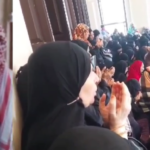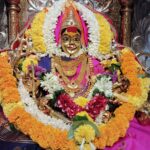Anupama Nair
Shanti Ghosh and Suniti Chaudhary were like any other teenage girls – scared of darkness, liking to play with their toys, but no one would imagine they would shoot a tyrannical British magistrate Charles Geoffrey Buckland Stevens, for avenging the hanging of Bhagat Singh, Rajguru and Sukhdev.
Shanti Ghosh was born on 22 November 1916 in Calcutta in British India. She was the daughter of Debendranath Ghosh, who was a nationalist and a professor of philosophy at Victoria College in Comilla now in Bangladesh. Suniti Chowdhury was born on 22 May 1917 in Comilla to Umacharan Choudhury and Surasundari Choudhury.
Ghosh was the founding member of the Chhatri Sangha and served as its secretary. Ghosh was inspired by Profulla Nandini Brahma, a student at Faizunnesa Girls' School in Comilla, and then joined the Jugantar Party, which was a militant revolutionary organization that “used murder as a political technique to dislodge British colonial rule”. She was trained in self-defense. Chowdhury was influenced by the revolutionary activities of Ullaskar Dutta, who also lived in Comilla. She was recruited to the Jugantar Party by Profulla Nandini Brahma. During this time, she was known by the alias of ‘Meera Devi’. She was selected as the ‘custodian of firearms’ and was in charge of training female members (of the Chhatri Sangha) in lathi, sword and dagger play.
That was the time of the Civil Disobedience Movement in the country. Prafulla Nandini Brahma, she mentored and supplied her with the books—mainly the revolutionary literature banned by the British. “Life is a sacrifice for the Motherland”—the words of Swami Vivekananda shaped her beliefs.
Suniti became the Major of the District Volunteer Corps. She led the parade of girls when Netaji Subhash Chandra Bose was in town to address the student organisation. Prafulla asked Bose about his thoughts on the role of women in the revolutionary movement. Without a pause, Bose replied, “I’d be happy to see you in the front row.” On being requested by Shanti Ghosh to give his autograph, Subhash Chandra Bose wrote, “To preserve your, honour, take up arms yourselves, YE MOTHERS“
Meanwhile, ‘Chhatri Sangha’, the female wing of the organisation, affiliated to ‘Yugantar’ was training young girls, while the smartest and bravest of the trainees passed on information, papers, arms, ammunition, and money, for the revolutionaries.
However, Prafulla, Santisudha Ghosh, and Suniti Choudhury demanded more effective responsibilities—to stand equal to the boys! When some of the senior leaders expressed their doubts on little girls going into action, Suniti retorted, “What good is our current dagger-and-stick play, if we shy away from real action?”
Finally, Biren Bhattacharjee, one of the absconding leaders, secretly interviewed the girls — Prafulla, Santisudha Ghosh, and Suniti Choudhury and declared the three to be of outstanding courage.
Their practical training began under the supervision of Akhil Chandra Nandi, president of the Tripura Students’ Organisation. They skipped school, sneaked out to the Maynamati Hills away from the dense town, and fired practice shots. Suniti Choudhury was held captive in Hijli Detention Camp as a “third-class prisoner”.
The key challenge was not to shoot targets but to manage the back kick of the revolver. Suniti’s index finger did not reach the trigger properly, but she was not ready to give up. She used her long middle finger to fire her lethal shots from a small revolver of Belgian make.
Their target was the District Magistrate Charles Geoffrey Buckland Stevens, a man who would stop at nothing to destroy the Satyagraha. He threw all the leaders into prison and harassed every non-violent Indian who raised a voice. Something had to be done to set the balance right, and Santi-Suniti were going to execute it. Stevens was born in December 1880, originally belong to London. He arrived in India on December 18 1914. He joined as Dist. Magistrate & Collector of Tiepera which was the district of Comilla, on 6th March 1930.
The girls sent an interview slip through the orderly, and the Magistrate came out, along with Sub-divisional Officer (SDO) Nepal Sen.
Stevens glanced at the letter passed to him. The girls, Illa Sen, and Meera Devi as per the signatures, were appealing to the Magistrate for a swimming club. The use of a much-flattering “Your Majesty” and some otherwise incorrect English left no doubt about their sincerity. Illa also identified herself as being the daughter of a police officer to win over the “majesty’s” sympathy.
The girls were getting impatient for a clean window. They requested Stevens to sign the letter as a reference. He went to his chamber and soon returned with the signed paper. That was his last move before the shots rang through the house. The notorious magistrate’s last sight was the two girls, now without the silk wrapper, pointing two revolvers straight at his heart.
The girls were taken into custody and imprisoned in the local British jail. In spite of all the difficulties, Choudhury and Ghose maintained their calm and cheerfulness throughout their trial days in prison and in the court. They expected to die martyr’s death. However, when in February 1932, Ghose and Choudhury appeared in court in Calcutta, being minors, both of them were sentenced to jail for 10 years. In an interview, they stated, “It is better to die than live in a horse’s stable.”
The effects of her activities were also faced by her family, with her father’s government pension being stopped, and her two elder brothers being held in custody without trial. Her younger brother died from consumption, exacerbated by years of malnutrition. She was released, along with Santi Ghose in 1939, after having served seven years of her sentence, because of the amnesty negotiations between Gandhiji and the British Indian government.
Contemporary Western periodicals characterized the assassination of Stevens as a sign of “Indians’ outrage against an ordinance by the Earl of Willingdon that suppressed the civil rights of Indians, including that of free speech.” Indian sources portrayed the assassination as Ghose and Choudbury’s response to the “misbehaviors of the British district magistrates” who had abused their positions of power to rape Indian women.
After the verdict was announced, a flyer was found by the intelligence branch of police in the Rajshahi district praising Ghose and Chowdbury as nationalist heroines. The poster read, “THOU ART FREEDOM’S NOW, AND FAME’S” and displayed photographs of the two girls alongside lines from Robert Burns’ poem Scots Wha Hae:
“Tyrants fall in every foe!
Liberty’s in every blow!”
After seven years, Suniti got an early release with an undaunted spirit. She again faced a life full of struggle awaiting her in the outside world. She resumed her studies and took the M.B.B.S. degree. In 1947 she married Pradyot Kumar Ghose. With an only daughter, she died in 1994. Her heart was always bleeding at the sufferings of millions of her dear countrymen, and ill-at-ease for not being able to do all that she wants to do for them.
After her release, Ghose attended the Bengali Women's College and participated in India's Communist movement.[2] She later joined the Indian National Congress.[2] In 1942, Ghose married Professor Chittaranjan Das.[2] She served on the West Bengal Legislative Council from 1952–62 and 1967–68.[2] She also served on the West Bengal Legislative Assembly from 1962–64.[2] Ghose wrote and published a book entitled Arun Bahni.[2]

































Well written Anu
Well written Anu
Well written Anu
Well written Anu
Well written Anu
Great story
Great story
Thank you for publishing such articles.
Thank you for publishing such articles.